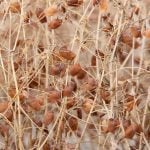Glacier FarmMedia — With hot and dry conditions, the Alberta harvest is now in full swing, advancing 14 points to 22 per cent complete, the provincial agriculture department reported on Sept. 5. Combining was one point up compared to its five-year average.
The report noted there was some uneven ripening in the wetter areas of the province.
Harvest progress
Among Alberta’s five agricultural regions, the south was furthest along at 33 per cent, progressing 13 points on the week. The northwest was second at 24 per cent done, advancing 18 points, followed by the Peace at 20 per cent finished, up 12 points. The northeast was next at 18 per cent harvested, climbing 14 points, and then the central region at 16 per cent complete, moving 13 points.
Read Also

U.S. grains: Soybeans bounce as Chinese demand assessed, wheat drops
Chicago soybean prices firmed on Friday in a bargain-buying bounce after a sharp fall on Thursday, as traders assessed prospects for more U.S. sales to China after the trade war truce between the countries.
Crop-wise, Alberta’s dry peas were 77 per cent combined, progressing 27 points over the week. Spring barley and wheat were next at 29 and 26 per cent done, respectively. The wheat advanced 20 points and the barley was up 18. Oats were at 17 per cent finished, adding 14 points and the canola tallied three per cent complete, up from less than one per cent last week.
Soil moisture levels
While the weather conditions were favourable to field operations, they reduced soil moisture levels. The surface soil rated 45 per cent good to excellent, down 12 points, but two above the five-year average.
By region, the central was far ahead of the others at 67 per cent good to excellent. The Peace rated 38 per cent good to excellent, with the south and northeast at 36 per cent and the northwest at 35 per cent.
Alberta’s sub-surface moisture levels were 46 per cent good to excellent, losing eight points but five above its five-year average.
The week’s weather also slowed pasture growth, with some starting to turn brown. The province’s pastures were 44 per cent good to excellent and still above the five-year average of 35 per cent. As for the tame hay, it rated 38 per cent good to excellent, giving up six points on the week and was five under its five-year average.













